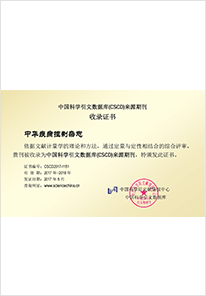2021 Vol. 25, No. 12
Display Method:
2021, 25(12): 1365-1368, 1480.
doi: 10.16462/j.cnki.zhjbkz.2021.12.001
Abstract:
2021, 25(12): 1369-1373, 1402.
doi: 10.16462/j.cnki.zhjbkz.2021.12.002
Abstract:
2021, 25(12): 1374-1379, 1386.
doi: 10.16462/j.cnki.zhjbkz.2021.12.003
Abstract:
2021, 25(12): 1393-1397.
doi: 10.16462/j.cnki.zhjbkz.2021.12.006
Abstract:
2021, 25(12): 1398-1402.
doi: 10.16462/j.cnki.zhjbkz.2021.12.007
Abstract:
2021, 25(12): 1403-1408.
doi: 10.16462/j.cnki.zhjbkz.2021.12.008
Abstract:
2021, 25(12): 1409-1413.
doi: 10.16462/j.cnki.zhjbkz.2021.12.009
Abstract:
2021, 25(12): 1414-1419,1425.
doi: 10.16462/j.cnki.zhjbkz.2021.12.010
Abstract:
2021, 25(12): 1426-1430.
doi: 10.16462/j.cnki.zhjbkz.2021.12.012
Abstract:
2021, 25(12): 1431-1435.
doi: 10.16462/j.cnki.zhjbkz.2021.12.013
Abstract:
2021, 25(12): 1436-1440,1469.
doi: 10.16462/j.cnki.zhjbkz.2021.12.014
Abstract:
2021, 25(12): 1447-1452.
doi: 10.16462/j.cnki.zhjbkz.2021.12.016
Abstract:
2021, 25(12): 1453-1458.
doi: 10.16462/j.cnki.zhjbkz.2021.12.017
Abstract:
2021, 25(12): 1463-1469.
doi: 10.16462/j.cnki.zhjbkz.2021.12.019
Abstract:
2021, 25(12): 1470-1475.
doi: 10.16462/j.cnki.zhjbkz.2021.12.020
Abstract:


 Email alert
Email alert RSS
RSS Abstract
Abstract HTML
HTML PDF
PDF





